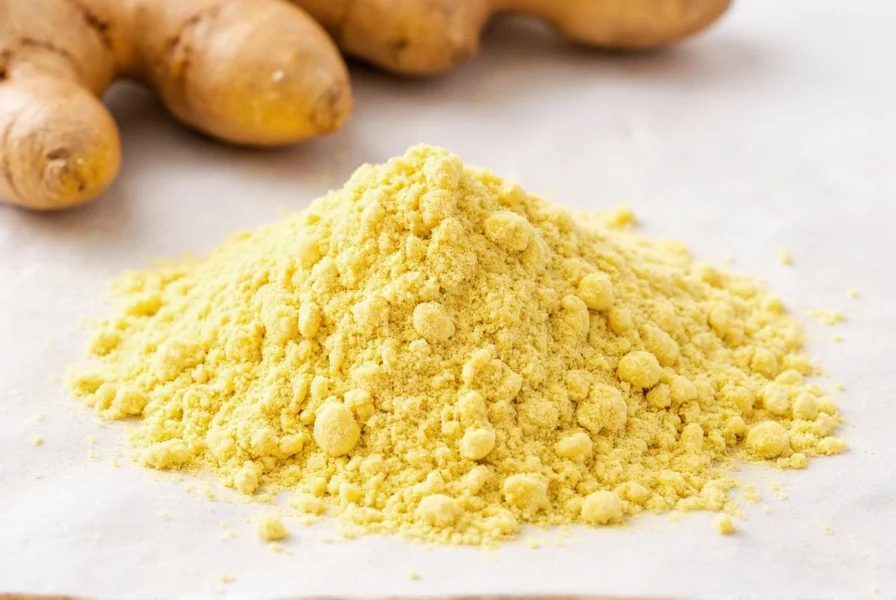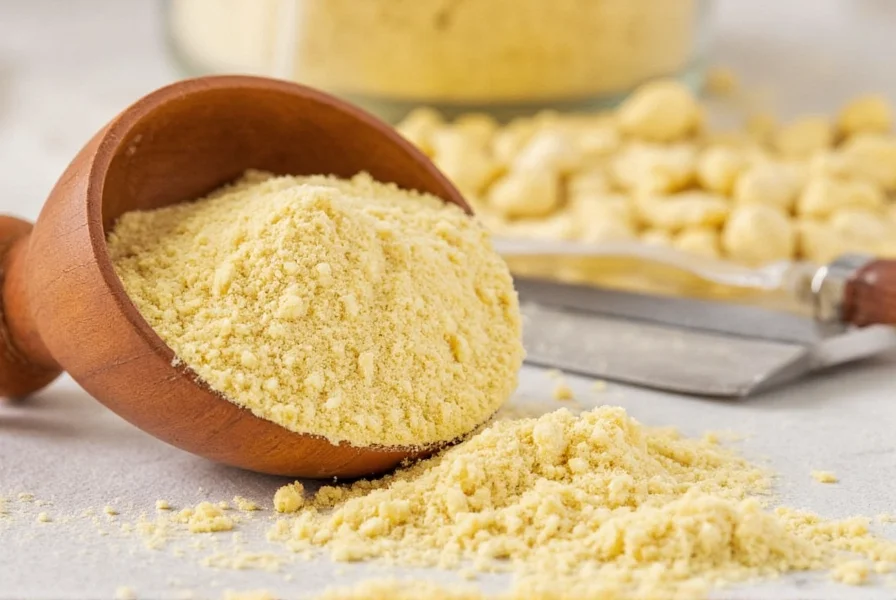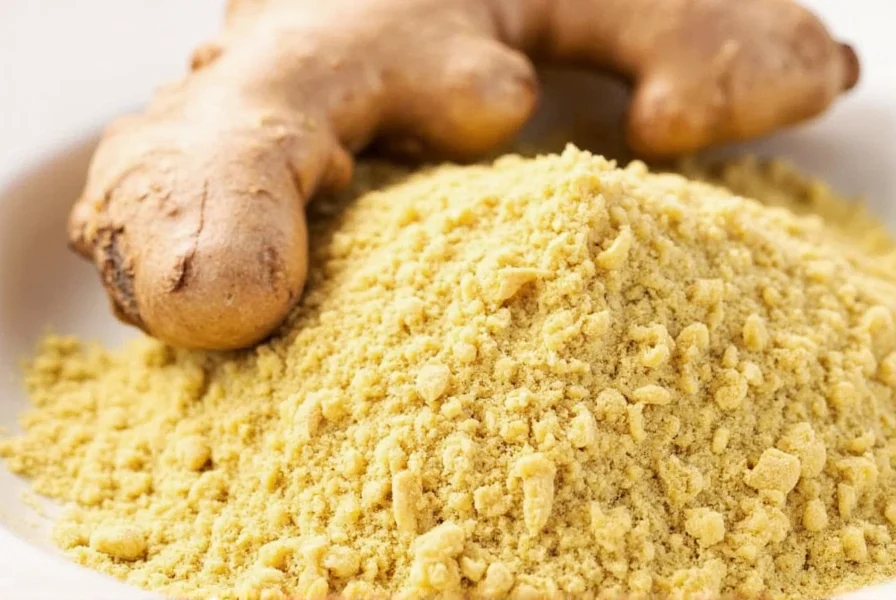1 tablespoon of fresh ginger equals approximately 1/4 teaspoon of ginger powder. This 4:1 ratio (fresh to powder) is the standard conversion for most recipes, though flavor intensity may vary based on ginger quality and recipe type.
When adapting recipes that call for one form of ginger but you only have the other available, understanding the proper conversion ratio is essential for maintaining flavor balance. Many home cooks struggle with this substitution, often resulting in dishes that are either too mild or overwhelmingly spicy. The key difference lies in ginger's water content—fresh ginger contains about 80% water that evaporates during the drying process used to create powder, concentrating the flavor compounds.
Understanding Ginger Forms and Their Properties
Fresh ginger root (Zingiber officinale) and ground ginger powder represent two distinct forms of the same botanical ingredient, each with unique chemical compositions that affect their culinary applications. Fresh ginger contains gingerol, the compound responsible for its characteristic spicy bite, while dried ginger develops higher concentrations of shogaol through the dehydration process, creating a more intense, slightly different flavor profile.
The moisture difference is significant—fresh ginger is approximately 80% water, while ginger powder contains less than 10% moisture. This dramatic reduction explains why the powdered form delivers more concentrated flavor in smaller quantities. When substituting between forms, simply replacing equal measurements will almost always result in an imbalanced dish.
| Form of Ginger | Equivalent Measurement | Best Used For |
|---|---|---|
| Fresh ginger, grated | 1 tablespoon | Asian cuisine, marinades, beverages |
| Ginger powder | 1/4 teaspoon | Baking, spice blends, dry rubs |
| Fresh ginger, sliced | 3 slices (1/8" thick) | Teas, broths, infusions |
| Ginger powder | 1/8 teaspoon | Teas, broths (as substitute) |
Flavor Profile Differences Between Fresh and Powdered Ginger
The flavor transformation that occurs when fresh ginger dries into powder significantly impacts how each form interacts with other ingredients. Fresh ginger offers bright, citrusy notes with a sharper heat that dissipates relatively quickly. Powdered ginger, by contrast, develops a warmer, more earthy flavor with deeper spiciness that lingers longer on the palate.
Scientific analysis shows that the drying process converts approximately 60% of gingerol (the primary pungent compound in fresh ginger) into shogaol, which is nearly twice as pungent. This chemical transformation explains why the same weight of powdered ginger delivers significantly more heat than its fresh counterpart. Additionally, volatile aromatic compounds evaporate during drying, altering the overall flavor complexity.
When to Use Each Form: Practical Application Guide
Certain culinary applications work better with specific ginger forms. Understanding these distinctions helps you make informed substitutions when necessary:
Best applications for fresh ginger:
- Asian stir-fries and sauces where bright, sharp flavor is desired
- Marinades for meats and fish (the enzymes help tenderize)
- Fresh juices and smoothies
- Teas and infusions where visual appeal matters
- Dishes requiring textural element from grated or sliced ginger
Best applications for ginger powder:
- Baking (cookies, cakes, gingerbread)
- Dry spice rubs for meats
- Curry powders and spice blends
- Recipes where uniform flavor distribution is important
- Long-cooked dishes where fresh ginger might lose potency

Advanced Substitution Techniques
While the basic 4:1 ratio (fresh to powder) works for most applications, experienced cooks adjust based on specific recipe requirements:
For delicate dishes: Use a 5:1 ratio (more fresh ginger needed) when substituting powder for fresh in subtle-flavored dishes like light sauces or desserts. The concentrated powder can easily overpower.
For robust dishes: A 3:1 ratio may work better for strongly flavored dishes like curries or spice-heavy recipes where you want the ginger to stand out.
Acidity adjustment: When substituting powder for fresh, consider adding a tiny splash of citrus juice (about 1/8 teaspoon per teaspoon of powder) to mimic fresh ginger's brighter notes.
Timing matters: Add ginger powder earlier in the cooking process than fresh ginger, as its flavor needs time to bloom in liquids. Fresh ginger added at the end preserves more of its bright character.
Storage Considerations for Optimal Flavor
Proper storage significantly impacts how long each form maintains its flavor potency, which affects substitution ratios over time:
Fresh ginger: Store unpeeled in the refrigerator's crisper drawer for up to 3 weeks, or freeze for up to 6 months. Frozen ginger can be grated directly without thawing. As fresh ginger ages, its flavor intensifies slightly, so you may need slightly less older ginger.
Ginger powder: Keep in an airtight container away from light and heat. Properly stored, it maintains peak flavor for 6-12 months. After this period, you may need to increase the amount by 10-20% to achieve the same flavor impact. Test older powder by rubbing a small amount between your fingers—if the aroma is weak, it's time to replace it.

Common Substitution Mistakes to Avoid
Many home cooks make these critical errors when converting between ginger forms:
- Using equal measurements - This results in recipes that are either too mild (powder substituted for fresh) or overwhelmingly spicy (fresh substituted for powder)
- Ignoring recipe chemistry - In baking, ginger powder affects moisture content differently than fresh ginger, potentially altering texture
- Not adjusting for ginger quality - Younger, milder ginger requires different ratios than mature, fibrous ginger
- Adding at the wrong time - Powder needs longer cooking time to mellow, while fresh ginger added too early loses its bright notes
For baking applications specifically, remember that fresh ginger adds moisture to recipes. When substituting powder for fresh, reduce other liquids by approximately 1 teaspoon per tablespoon of fresh ginger replaced. Conversely, when using fresh ginger instead of powder in baking, you may need to slightly increase dry ingredients to compensate for the added moisture.
Special Considerations for Different Cuisines
Culinary traditions handle ginger differently, affecting substitution approaches:
Asian cuisine: Fresh ginger is preferred for its bright flavor. When substituting powder, use only 1/8 teaspoon per tablespoon of fresh ginger called for, and add a splash of rice vinegar to approximate the fresh flavor profile.
Indian cuisine: Many recipes use both fresh and dried ginger at different stages. For masalas and dry spice blends, stick to the standard 4:1 ratio. For wet masalas, use a 5:1 ratio as the liquid medium distributes flavor more evenly.
Baking traditions: In gingerbread and similar baked goods, powdered ginger provides more consistent flavor distribution. When substituting fresh, increase the amount by 300% and add 1/4 teaspoon of lemon juice per tablespoon of fresh ginger to balance the flavor.











 浙公网安备
33010002000092号
浙公网安备
33010002000092号 浙B2-20120091-4
浙B2-20120091-4